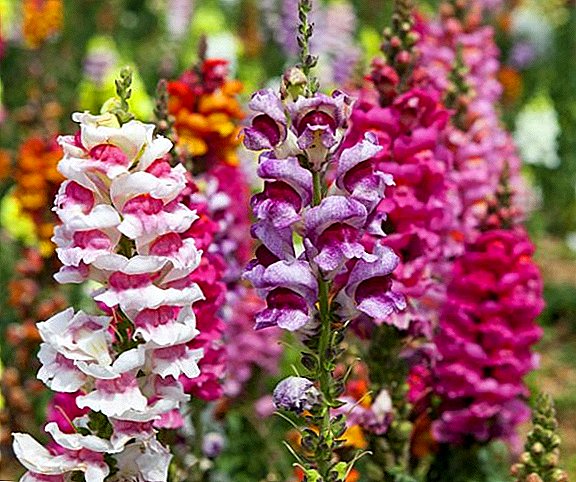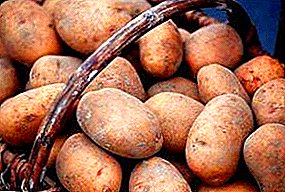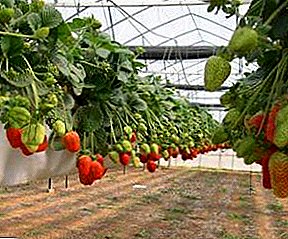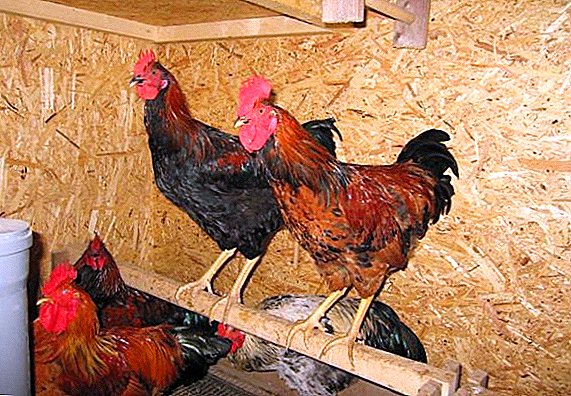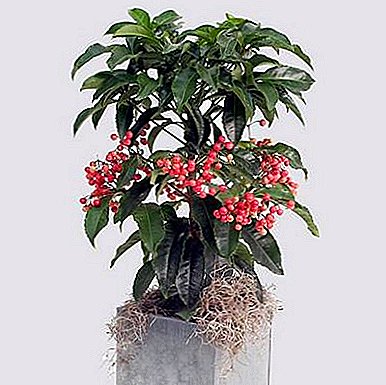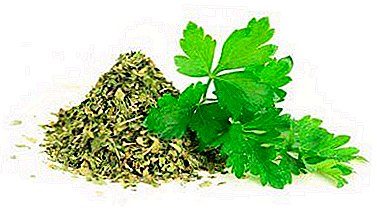
The Mediterranean coast is considered the birthplace of parsley, but at the same time this fragrant and tasty seasoning is spread throughout Europe and Asia.
It is grown even in Siberia and the Far East. To be able to use this crop throughout the year, many housewives during the summer season harvest it for the winter by drying. This article will look at how to prepare raw materials and various options for drying parsley. And also we will tell, on what signs it is possible to understand that preparations got spoiled.
Why procure the future?
Unfortunately, in our country there is no opportunity to grow greens all year round, so many garden crops are harvested for the winter. Dried parsley is very popular.
This method of preparation is good because parsley practically does not lose its taste, and its aroma becomes even more pronounced. Seasoning, prepared in this way, is added to the first courses, to meat, fish, salads, make sauces from it.
If the fresh greens in the fridge lasts no more than a week, then the dried parsley can remain edible for two years while observing the storage rules.
Chemical composition
 Dried parsley has a fairly high calorie - 276 kcal per 100 g of product. But since this seasoning is added to dishes in small quantities, it does not greatly affect the energy value.
Dried parsley has a fairly high calorie - 276 kcal per 100 g of product. But since this seasoning is added to dishes in small quantities, it does not greatly affect the energy value.
Greens and roots of this plant contain a large amount of vitamins and minerals. The chemical composition of parsley includes:
- vitamins A, C, D, P, K, E, PP, vitamins of group B;
- beta carotene;
- lutein;
- glucose;
- sucrose;
- fructose;
- calcium;
- magnesium;
- potassium;
- zinc;
- copper;
- selenium;
- iron;
- sodium;
- phosphorus.
Dried parsley practically does not change its composition compared to fresh. It retains the same beneficial substances that help maintain the body.
GOST AND TU
As with any product, there is a state standard for dried parsley. GOST 32065-2013 "Dried vegetables. General specifications" apply to the greens of plants, dried by heat treatment to achieve a mass fraction of moisture, ensuring their persistence.
The standard explains the terms and definitions, provides product classification, technical requirements and characteristics, requirements for raw materials from which dried greens are made. The rules of packaging, labeling, acceptance, storage and transportation. The appendices list the nutritional value of 100 g of vegetables, the conditions and shelf life. TU for dried parsley is no longer valid.
Useful properties and possible harm
Parsley is valued not only for its pleasant taste and pronounced aroma, but also for a large amount of substances useful to the human body.
The benefits of a dried plant are as follows:
 Strengthens the immune system. The content of vitamin C parsley exceeds the lemon, so its regular use in food helps to strengthen the body and cope with colds and inflammatory diseases.
Strengthens the immune system. The content of vitamin C parsley exceeds the lemon, so its regular use in food helps to strengthen the body and cope with colds and inflammatory diseases.- It has an antiseptic effect, helps in the treatment of diseases of the respiratory system, is an expectorant for bronchitis.
- Strengthens the nervous system, struggling with stress and depression. Choline contained in the composition, has a calming effect.
- It improves brain activity, enhances attention and concentration.
- It is useful for the cardiovascular system, strengthens the walls of blood vessels.
- Increases hemoglobin.
- Normalizes blood sugar.
- Restores the body's vitamin balance.
- Used as a diuretic, relieves swelling.
- It has a choleretic effect, therefore it is useful for the liver and gallbladder.
- Removes harmful toxins from the body, improves metabolism, helps to get rid of excess weight, normalizes fat metabolism in the body, eliminates cellulite.
- Regulates the menstrual cycle, reduces the intensity of pain during menstruation.
- It is useful for nursing mothers, as it stimulates the production of milk.
- Normalizes the potency in men.
Parsley can harm people suffering from urolithiasis, cystitis, kidney disease, and allergies. Excessive consumption of this plant can cause headache, nausea, indigestion, muscle pain and even cramps.
Raw material preparation
In order for dried parsley to retain more nutrients and store as long as possible, it is necessary to choose the right plants for harvesting. Of course, It is best to use greens grown in their own garden. Only in this case, you can be fully confident in its safety and usefulness. Grass should be collected in dry weather during the day when there is no dew. For blanks suitable fresh green twigs with delicate leaves. The collection should be carried out before flowering plants.
 If your site is not, then parsley for harvesting can be bought in the store or on the market. In this case, the plant should be chosen carefully. Greens should look as if they had just ripped it from the garden:
If your site is not, then parsley for harvesting can be bought in the store or on the market. In this case, the plant should be chosen carefully. Greens should look as if they had just ripped it from the garden:
- dry;
- bright
- fresh
- without wilted and spoiled leaves.
Quality parsley has a bright spicy aroma. You should not take crumpled, dried and pale greens, with incomprehensible bloom and spots on the leaves. Sticky and shiny leaves indicate that the plant was treated with chemicals. The spoiled parsley has a distinct smell of rot.
Attention! You should never buy parsley on the sides of the road, as the plant absorbs dust, exhaust fumes and other harmful emissions.
If the parsley harvesting for the winter will not be made on the day of purchase, it can be kept fresh in the refrigerator. The beams are placed in a jar of water and put in a refrigerator. It is necessary to ensure that there are no strong smelling products.
- Before drying, the parsley leaves are picked, removed, and spoiled, yellowed and wilted twigs.
- Lower thicker stems are best pruned. Then the grass is thoroughly washed in running water and laid out on a paper towel to glass liquid.
- Parsley roots are washed and cleaned with a stiff brush.
- Knife scrape skin and cut into thin slices or strips.
How to dry greens at home?
There are many ways to harvest parsley for the winter in dried form. Each hostess chooses the most convenient for themselves.
On air
This method is the longest of all. But at the same time the plant retains most of the useful substances and is stored for a long time. Parsley, dried in the air, can lie in a cool place for 2-3 years. The main thing is that the direct rays of the sun do not fall on the plant, otherwise it will turn yellow.
Greens for the winter can be dried in the form of cutting, and whole branches.
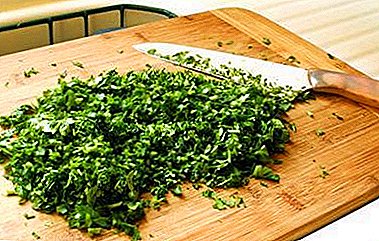 The leaves together with the stalks are crushed with a sharp knife and laid out on pallets, flat plates or a towel in the air.
The leaves together with the stalks are crushed with a sharp knife and laid out on pallets, flat plates or a towel in the air.- The place should be well ventilated, but be away from direct sunlight so that the parsley does not turn yellow.
- Periodically cutting should be mixed.
- Cover the pallets with insect gauze.
- Drying time ranges from 5 to 14 days depending on weather conditions.
Finely chopped green dries faster than branches with leaves.
Bundles
Drying parsley bunches allows you to save all the variety of valuable substances in the plant. Parsley, dried in this way, on the content of vitamin C and folic acid is not inferior to fresh. Preparation of greens takes less time, because it does not need to be cut.
Washed and prepared parsley twigs are tied with small bunches and tied on a rope down foliage in a ventilated warm place. Dried parsley will be ready in about a week.
In the oven
Much quicker and more convenient way of preparation. At the same time there is a loss of a certain amount of useful substances, in particular, essential oils. They are destroyed by heat. The shelf life of such parsley is about two years.
- In order to dry the greens in the oven, chop the parsley finely and spread it thinly on a baking sheet.
- The billet is dried for about 5-6 hours with the oven door open.
- The temperature should not exceed 50 degrees.
In the electric dryer
This method resembles oven drying. Dried parsley loses a small amount of vitamins during processing, but retains its color and flavor. Keep it in a tightly closed glass container for two years.
- Greens crushed with a knife or leave the whole twigs.
- On the dryer set the mode "For herbs" or manually set the temperature of 40-45 degrees.
- The trays are periodically swapped to make the parsley dry evenly.
In convection oven
 Drying parsley in a convection oven practically does not differ from the billet in an electric dryer. Greens retains the maximum amount of nutrients and remains the same delicious.
Drying parsley in a convection oven practically does not differ from the billet in an electric dryer. Greens retains the maximum amount of nutrients and remains the same delicious.
- The crushed grass is placed in a convection oven.
- The door is left slightly ajar to allow air to circulate.
- The temperature should not exceed 45 degrees, the power is set to the maximum value.
- To dry the plant will take no more than 20 minutes.
In the microwave
This is the fastest way to harvest dried parsley for the winter. Due to this, the maximum amount of healing substances, aroma and taste are preserved in the green. Such raw materials are stored for more than two years.
- Pre-washed parsley is crushed with a sharp knife and laid out on a flat plate.
- Keep in the microwave for two minutes at maximum power.
- If during this time the grass does not completely dry, you can put one more minute.
How to stock up on vegetables?
It is possible to harvest for the winter not only green parsley, but also roots. They are added to soups, borscht, main dishes.
- To dry the parsley root in the oven, it is thoroughly washed, peeled and cut into thin slices.
- Raw materials are laid out on a baking sheet and sent to the oven for 4-5 hours at a temperature of 50-60 degrees.
- Store parsley in a tightly closed container.
Preparations for the winter can be done in the electric dryer. The roots are cut into strips or small slices and dried at a temperature of 40-45 degrees.
Signs of spoilage
Store dried parsley in a dry dark place. away from heating devices. At observance of all norms, billets remain high quality for more than two years.
If stored improperly, parsley may spoil. The first signs of damage is mold. This happens if the dried grass lies in a wet place or water periodically falls on it. Insects may be added to the grass, for example, the food moth, so stocks should be regularly checked and aired.
With proper harvesting and storage, you can get an excellent supply of dried parsley for the winter. This spice will be an excellent additive for a variety of dishes, add flavor to them and saturate the body with useful substances.


 Strengthens the immune system. The content of vitamin C parsley exceeds the lemon, so its regular use in food helps to strengthen the body and cope with colds and inflammatory diseases.
Strengthens the immune system. The content of vitamin C parsley exceeds the lemon, so its regular use in food helps to strengthen the body and cope with colds and inflammatory diseases. The leaves together with the stalks are crushed with a sharp knife and laid out on pallets, flat plates or a towel in the air.
The leaves together with the stalks are crushed with a sharp knife and laid out on pallets, flat plates or a towel in the air.